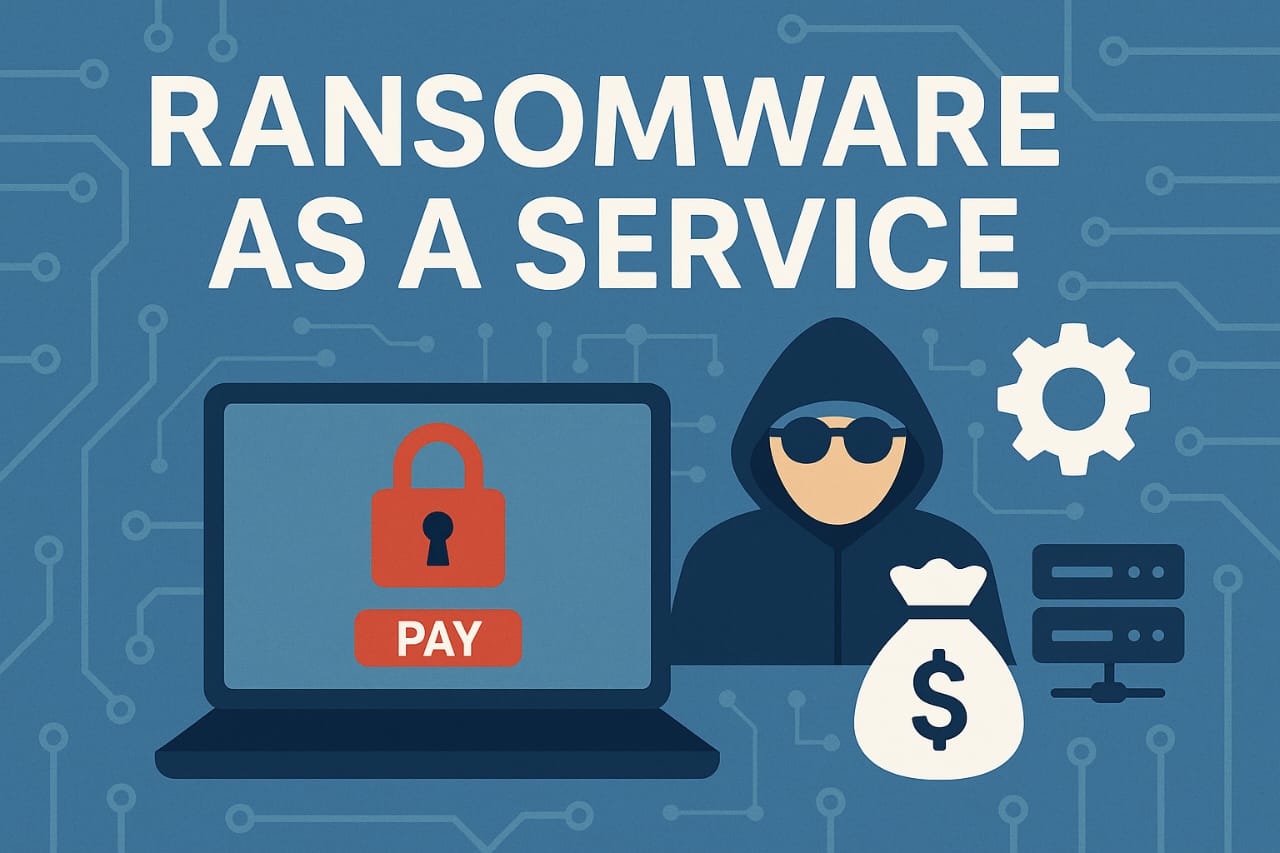
Cybercrime has evolved beyond lone hackers into a well-organized underground economy. One of its most dangerous innovations is Ransomware-as-a-Service (RaaS) — a system where even non-technical criminals can launch devastating cyberattacks using pre-built tools from the dark web.
From U.S. airlines and telecom firms to hospitals and infrastructure, RaaS-powered ransomware is causing billions in damage worldwide. In this blog, we explore recent U.S.-based ransomware attacks, explain how RaaS works, and offer key protection tips.
🚨 Recent High-Profile Ransomware Attacks in the U.S.
✈️ 1. Scattered Spider Targets U.S. Airline Industry (June 2025)
The notorious RaaS group Scattered Spider—previously linked to MGM Resorts and Caesars—has shifted focus to the airline sector. According to an FBI alert, the group used social engineering (posing as IT staff) to gain internal access, deploy ransomware, and steal sensitive flight operations data. This sophisticated approach highlights how easily human error can be exploited.
🔎 This is a textbook example of how RaaS + social engineering = massive disruption.
🏢 2. Arkana Group Breaches U.S. Telecom Firm WideOpenWest (March 2025)
The relatively new Arkana ransomware group launched a RaaS attack on WideOpenWest (WOW!), a telecom provider serving over 2 million users in the U.S. The attackers exfiltrated sensitive customer data, including contact details and billing information, and posted samples on dark web leak sites. Ransom demands followed, threatening full disclosure unless payment was made.
🔎 This attack underlines how telecom infrastructure—critical to daily life—is now a prime RaaS target.
🏥 3. Medusa Hits U.S. Critical Infrastructure
The Medusa ransomware gang, using the RaaS model, has been actively targeting healthcare, education, and manufacturing sectors in the U.S. Victims face double or triple extortion: data is encrypted, exfiltrated, and then weaponized through public leaks or additional threats if ransoms aren’t paid.
🔎 Medusa’s attack strategy proves RaaS groups don’t stop at encryption — they exploit every angle of leverage.
💻 What is Ransomware-as-a-Service (RaaS)?
Ransomware-as-a-Service is a cybercrime-as-a-business model where skilled developers build ransomware kits and lease them to other criminals (called affiliates) who actually carry out the attacks.
It’s essentially the “cybercrime version of SaaS,” and it includes:
- Subscription packages
- Revenue-sharing agreements (e.g., 70/30 split)
- Real-time dashboards for monitoring infections
- Leak sites to publish stolen data
- Technical support — just like legitimate software
This allows even non-technical actors to launch powerful, profitable attacks with minimal effort.
🛡️ How to Protect Your Organization from RaaS Attacks
As ransomware grows more accessible and dangerous, protecting your systems requires layers of defense:
✅ 1. Keep Secure Backups
- Backup data regularly to both cloud and offline storage.
- Test backup recovery procedures periodically.
✅ 2. Update and Patch Systems
- Keep all software, firmware, and operating systems updated.
- Patch known vulnerabilities immediately.
✅ 3. Email and Phishing Protection
- Use advanced email filters and anti-phishing tools.
- Train staff to recognize social engineering attempts.
✅ 4. Limit Access with Zero Trust
- Apply the “least privilege” principle.
- Use MFA (multi-factor authentication) for all critical accounts.
✅ 5. Endpoint Detection & Response (EDR)
- Deploy EDR tools to monitor behavior and isolate threats.
- Use real-time threat intelligence for proactive response.
✅ 6. Preserve Evidence if Attacked
- Do not wipe infected systems until professionals investigate.
- Log and collect metadata for tracing and legal recourse.
You may explore more about Cyber security. please click here
🧠 Final Thoughts
Ransomware-as-a-Service has revolutionized cybercrime, giving anyone with a few hundred dollars access to military-grade attack tools. The latest breaches of U.S. airlines and telecom infrastructure prove that no industry is safe.
But with the right defensive strategies—from technical safeguards to user training—you can drastically reduce your risk.
